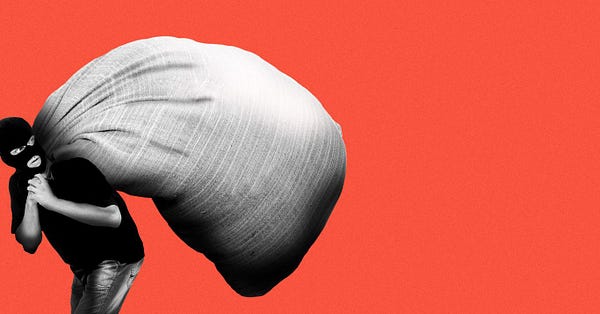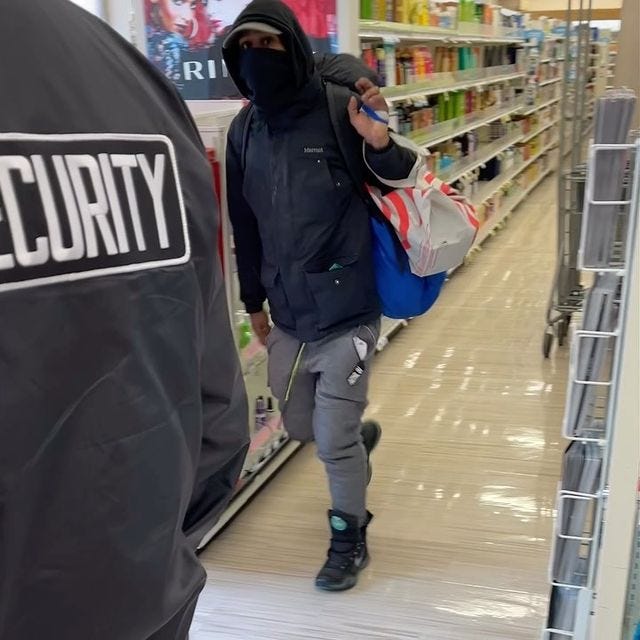Rite Aid, wrong crime
On January 25, actor and comedian Michael Rapaport posted a video of a man allegedly stealing condoms and shampoo from a Rite Aid on the Upper East Side of New York City. Rapaport claimed the theft, and others like it, were forcing the store to close. "I was just informed this Rite Aid is closing 2/15 because of this, leaving the workers JOBLESS," he wrote.
Rapaport's video was extensively featured in the media, particularly the New York Post, the tabloid owned by Rupert Murdoch's News Corporation. The New York Post featured Rapaport's video in at least six separate articles.
The Rapaport video was also covered by Fox News, TMZ, The Daily Mail, The New York Daily News, and other outlets.
The New York Post's coverage of the video endorsed Rapaport's claim that Rite Aids in New York City were closing due to shoplifting incidents. "The Rite Aid at the corner of 8th Avenue and 50th Street in Hell’s Kitchen will close [February] 8 because of the rampant pilfering, said store sources who claim thieves have ripped off more than $200,000 worth of merchandise in the past two months alone," the tabloid reported.
The claim is not limited to the right-wing echo chamber. Axios, citing the New York Post, flatly asserts that Rite Aids are closing due to increased shoplifting:


There is only one problem: it is not true.
The Rite Aids in New York City were not closing because of a surge in shoplifting in recent months. Rather, last year, Rite Aid identified 63 stores across the country to close as part of a broader effort to "reduce costs" and "drive improved profitability." According to the company, those stores began closing on a rolling basis in November of 2021. Asked specifically by Curbed why the stores were closing, Rite Aid made no mention of shoplifting. Rite Aid said the stores were selected based on "overarching business strategy, lease and rent considerations, local business conditions and viability, and store performance."
Rite Aid's decision to close stores is part of a larger trend in the drugstore industry that reflects the changing economics of the business. CVS also announced last November that "it would shutter 900 locations over three years, about 10% of its stores." The company said that it "has not closed any stores due to shoplifting." The decision to close stores is based on "the dynamics of the local market and the changing buying habits of our customers."
To make money, drugstores need people to come into their stores to fill prescriptions and, while they are at the store, pick up higher-margin items like non-prescription drugs and cosmetics. Today, however, there are many other options to get prescriptions filled, including online pharmacies that deliver prescription drugs by mail. This has reduced the number of people who regularly shop at drugstores. But the number of drugstores in the United States — roughly 60,000 — has remained static.
The contraction by Rite Aid, CVS, and other chains reflects these fundamental economic changes. Walgreens, the other major chain, has closed roughly 1,000 stores since 2018.
Is there a crime wave in New York City?
So crime is not the reason that drugstores in New York City are closing. But is there a surge in shoplifting in New York City?
According to the data, there is a modest rise in reported shoplifting incidents compared to the year before the pandemic began. There were 37,918 complaints of retail theft citywide in 2019 and 43,864 such complaints in 2021 — an increase of about 15%. (There were 32,358 retail theft complaints in New York City in 2020, when much of the city was shut down due to the pandemic.) Complaints are not a perfect measure of crime trends because not all thefts are reported. But it is certainly a more rigorous metric than Michael Rapaport's Instagram account.
The 15% increase in retail theft complaints comes in the context of a dramatic decrease in crime, including more serious property crimes that impact retailers, in New York City. In 2001, there were 27,873 robbery complaints in New York City, and last year the city had 13,831 robbery complaints. In 1990, there were over 100,000 robbery complaints.
Overall, felony crimes in New York City are down 36.6% since 2001 and 80.5% since 1990. All crime is a problem but, overall, crime is much less of a problem in New York City than it has been in the recent past.
Rite Aid's (alleged) crime spree
While a man stealing shampoo and condoms from Rite Aid attracted extensive media coverage, Rite Aid's alleged illegal exploitation of its own workers has received scant attention. Rite Aid has repeatedly been accused of illegally underpaying its workers and settled these cases for millions of dollars.
In October 2021, Rite Aid agreed to pay $12 million to 25,000 employees in California. The lawsuit, which involved allegations that the company forced employees to buy their own uniforms, was covered by a handful of subscription-only legal trade publications like Bloomberg Law and Law360. It was ignored by the New York Post and other mainstream publications that covered the Rapaport video.
In 2017, Rite Aid paid $5.5 million to employees in New York State to settle claims that it forced salaried employees to perform the roles of cashiers and stock handlers without paying them overtime. In 2013, Rite Aid paid a $20.9 million settlement to resolve similar claims involving more than 7,000 employees across several states. Those actions alleged that the company failed to pay overtime to assistant store managers and co-managers. Both settlements received scant media attention.
In 2016, Rite Aid paid $9 million to 2,775 pharmacists in California who alleged that the company denied them legally-required meal and rest breaks.
Rite Aid had $24 billion in revenue in 2021 and is insured against thefts of condoms and shampoo. The median Rite Aid employee, however, makes just $33,212 annually. When the company steals hundreds or thousands of dollars in wages from its employees, it has a real impact on workers who are struggling to make ends meet.
Stealing wages is a bigger problem than stealing shampoo
The settlements by Rite Aid and other corporations for wage theft represent just a small fraction of the problem. Federal enforcement of wage theft falls under the purview of the Wage and Hour Division (WHD) of the U.S. Department of Labor. According to research by Northwestern University Professor Daniel Galvin, in 1948 "the WHD employed 1,000 investigators and was responsible for protecting 22.6 million workers." Today, according to a report in NBC News, 765 federal investigators are responsible for protecting 143 million workers.
Rite Aid workers in California and a few other states were able to recover wages lost from wage theft by filing a class-action lawsuit. But, for many workers, that kind of lawsuit isn't an option.
According to a report from the National Employment Law Project, "17.75 million workers in the United States earning less than $13 per hour...were subject to forced arbitration in 2019." Millions of these workers are victims of wage theft annually. But the "employer-imposed collective and class-action waiver" prohibits them from joining forces to take on employers who cheat. Instead, disputes are pushed into private arbitration, a forum that is notoriously friendly for corporations.
A 2017 study of minimum wage violations, which is just one kind of wage theft, found that in the ten most populous states "2.4 million workers lose $8 billion annually (an average of $3,300 per year for year-round workers) to minimum wage violations—nearly a quarter of their earned wages."
If similar levels of wage theft are found in other states, it suggests "the total wages stolen from workers due to minimum wage violations exceeds $15 billion each year." That's more than the value of stolen goods in all property crimes, according to the latest FBI statistics.






Apropos of nothing, "Rite Aid, wrong crime" is a great title.
Thank you for this very helpful information. I especially appreciate when you are able to correct false information being spread by irresponsible people.